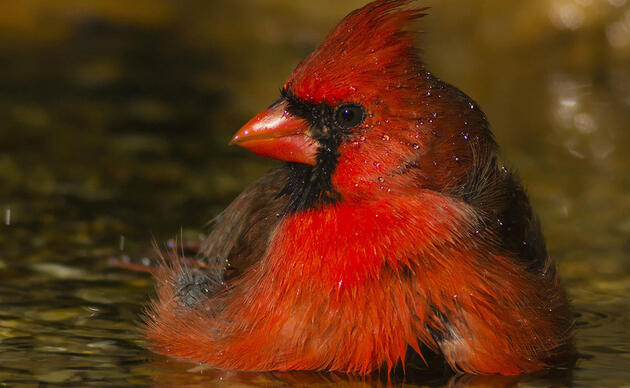Spring has arrived on Florida beaches with warmer temperatures and shorebirds beginning their yearly nesting cycle. The Audubon/Florida Park Service partnership team is conducting weekly nest surveys at three state parks in the Florida panhandle: St. Joseph Peninsula, St. George Island and Bald Point State Parks. These parks include some of the last remaining undeveloped barrier islands and coastal beaches which are also critical for beach-nesting shorebirds. The five main species monitored at these parks include Snowy Plovers, Wilson’s Plovers, Least Terns, American Oystercatchers and Black Skimmers,
Following recent banding events, we are highlighting the American Oystercatchers breeding at these three state parks. The banding efforts are part of a long-term research program, in collaboration with the Florida Fish and Wildlife Conservation Commission and the American Oystercatcher Working Group, assessing nest success and reproductive performance, survival, and movement patterns.
But first, what is an American Oystercatcher? It is a large “crow-sized” shorebird with black and white plumage, pink fleshy legs, a bright reddish-orange bill and bold yellow eyes. As their name implies, oystercatchers are adept at prying open oyster shells to feed. They spend the majority of their time foraging and roosting around oyster bars. Right now, those oyster bars are the battling grounds for adult oystercatchers attempting to find the best mates, the best nesting locations, and optimal foraging hotspots. Oystercatchers are frequently spotted on oyster bars across from the boat launch at St. George Island State Park near Goose Island, especially during low tide. To see the birds, binoculars or a spotting scope are recommended as they allow observation without scaring the birds away. American Oystercatchers are sensitive to human disturbance since they view us as potential predators and a respectful distance should always be maintained.
At the beginning of the breeding season, oystercatchers scratch shallow depressions in sand or shells to make pre-nesting scrapes before choosing the best one for their nest. Once eggs are laid, they are incubated for 30 days until hatching, and the parents care for the semi-dependent chick for another 30 days until the chicks are flight capable. These are two critical months the birds have to avoid predators and disturbances, human activities and storms that threaten their survival. Following fledging, juvenile oystercatchers must survive an additional two years until they are capable of breeding. Most oystercatchers do not reproduce until they are at least 3 years old. However, it is a tough life and few nests survive to hatch, few chicks survive to fledging and few survive to reproduce as part of the adult population.
Pre-nesting scrapes have already been observed this spring during our weekly surveys. Once the scrapes are found, we mark the area with temporary posts and signs to inform the public that birds are using the area for breeding. Posting is a way to protect nesting birds from human disturbances that can cause these threatened species to abandon their nests or lead to indirect predation by opportunistic predators such as laughing gulls. By preventing human intrusion, we hope to increase the odds that nests will survive to hatch, and more chicks will fledge. We recently added new interpretive signs to educate park visitors of beach-nesting shorebird areas and hope this effort will contribute to a reduction in human disturbance.
Along with conducting breeding surveys and protecting breeding habitat, we have the unique opportunity to band some of the birds. Why do we band individual American Oystercatchers? Currently in Florida, their population numbers are low and they are considered state threatened. By banding oystercatchers, we have the opportunity to monitor the movements of individual birds within the nesting territory and to their wintering grounds—which can be in a different part of the state, country or even continent! Banded individuals can help us monitor how long oystercatchers survive at the state parks and if they move to a different nesting territory and or continue to use the same location year after year. Over time, as we monitor nests and breeding adults, we have the chance to observe and document the field-readable codes uniquely identified to each individual. Throughout the course of the breeding season, resighting banded individuals will help us identify each territory as well as individual nesting success and in turn dictate the overall productivity and health of the population.
Trapping oystercatchers require reading behavioral cues and plenty of patience. Using our oystercatcher decoy “Woody” and an audio playback call causes a pair of territorial oystercatchers to react to and try to chase off the intruder from their territory. This behavior provides an opportunity to catch individuals.
We banding Oystercatchers by placing red bands with vertical white numbering on each upper leg and a USFWS metal band applied to the lower right leg. We also collect of the bird’s physical characteristics and then they are released to reunite with their mate.
Already, Red 72 has been re-sighted foraging on the opposite side of Goose Island and it appears that American Oystercatchers are very localized when foraging. After banding Red 73, a scrape was found during a survey near the original banding location. We will continue to monitor these birds for the rest of the year, and hopefully, for the rest of their lives.
More information on resighting American Oystercatchers and banding schemes that are used by different states can be found at the amoywg.org. More information on American Oystercatchers populations throughout their range can be found by clicking here.
By Jonathan Webber
Stay in Touch!
Show your love of birds today. Subscribe to receive email updates about Audubon's conservation work and hear about opportunities to help birds in your area or nationwide.




